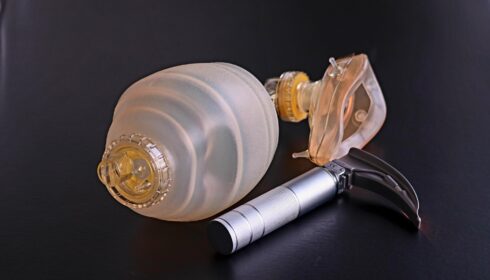Target Protein – Augmented Enteral Protein During Critical Illness

Augmented Enteral Protein During Critical Illness
MJ Summers. JAMA 2025; doi: 10.1001/jama.2025.9110
Clinical Question
- In critically ill patients receiving enteral nutrition does the augmentation of protein delivery compared to standard care result in an increased number of days free of the index hospital and alive at day 90?
Background
- Critical illness weakness is a common complication within the ICU population and leads to longer ICU and hospital length of stay, higher risk of complications, higher health burden and subsequent impact on health economics
- Enteral protein delivery is proposed to help attenuate muscle atrophy during critical illness
- Guidelines have suggested an augmenting protein delivery to 1.2g/kg/day however patients often receive ~50% of this
- Two recent RCTs showed no benefit of augmented protein delivery:
- PRECISe found that increased protein delivery (2g/kg/day) resulted in worse health-related quality of life and did not improve functional outcomes during 180 days after ICU admission
- EFFORT Protein showed that delivery of higher doses of protein (> 2.2g/kg/day) to mechanically ventilated critically ill patients did not improve the time-to-discharge-alive from hospital and might have worsened outcomes for patients with acute kidney injury and high organ failure scores
Design
- Investigator-initiated, cluster randomised, crossover, open-label trial
- Computer-generated site randomization schedule
- ICUs were randomly assigned to provide treatment sequences alternating between augmented protein/usual protein (or vice versa) for 3-month blocks over a 12-month period (i.e. each block occurred twice)
- Participants continued to receive the originally assigned trial enteral nutrition if they remained in the ICU following a crossover period
- Concealment revealed one month prior to commencement for logistical reasons
- Sample Size Calculation:
- Using data from the TARGET trial, an 84-cluster, 4-period design, with a cluster period size of at least 60 patients, would provide at least 80% power to detect a 2-day difference in the number of days free of the index hospital and alive at day 90
- Three initial subgroups specified (BMI > 35, mechanical ventilation, > 70 years), but following EFFORT Protein trial, AKI was added as an additional subgroup
Setting
- 8 ICUs in Australia and New Zealand
- Each unit recruited patients for 12 month period between May 2022 – August 2023
Population
- Inclusion:
- > 16 years old
- Prescribed enteral nutrition
- Exclusion:
- Treating clinician considers the trial enteral formula to be contraindicated
- Received greater than 12 hours of non-trial enteral formula
- Prior participation in the trial
- 1681 in augmented group vs 1716 in usual protein group
- 3599 assessed for eligibility
- Majority excluded due to contraindication
- 3599 assessed for eligibility
- Comparing baseline characteristics of augmented vs. usual care group
- Age: 61 vs 61
- Male: 64 vs 64%
- Non surgical admission reason: 64 vs 64%
- Diabetes: 26 vs 26%
- BMI: 28 vs 28
- APACHE II: 19 vs 19
- Clinical Frailty Score: 3 vs 3
- Invasive Ventilation: 82 vs 79%
- Vasopressors: 55 vs 54%
- New RRT: 7 vs 6%
- Time from ICU admission to enrolment: 19 vs 19 hrs
Intervention
- Nutrison Protein Intense (100 g protein/L)
- The median duration of administration was 87 hours
- The median (IQR) volume of trial enteral nutrition delivered was 696 (408-951) mL per day
- Protein delivered 1.12 g/kg IBW / day and calories 14 kcal/kg IBW/day
Control
- Nutrison Protein Plus (63 g protein/L)
- The median duration of administration was 84 hours
- The median volume of trial enteral nutrition delivered was 676 mL per day
- Protein delivered 0.69 g/kg IBW / day and calories 14 kcal/kg IBW/day
Management common to both groups
- Both isocaloric (1.25kcal/ml) and iso-osmolar (340 mOsmol/kg)
- All other aspects of nutrition as per local unit practice, and goal rate set by treating clinician in line with usual practice
- Education was provided on prescribing nutrition for ideal body weight
- Formula delivered until day 90, death or discharge from the ICU (whichever came first)
- Rates of parental nutrition (~7%) and protein supplements (<1%) were similar between groups
Outcome
- Comparing augmented vs usual care groups
- Primary outcome:
- Number of days free of the index hospital and alive at day 90
- Median 62 days vs 64 days
- Median Difference -1.97 days (-7.24 to 3.30), p = 0.46
- Results consistent when different analytical methods used (linear mixed model, Bayesian quantile mixed model) and on sensitivity analysis (excluding those who received non-trial formula)
- Heterogeneity of treatment effect in those receiving mechanical ventilation (p value for interaction = 0.02) and new RRT (p value for interaction < 0.001)
- Both favoured usual protein administration
- Number of days free of the index hospital and alive at day 90
- Secondary outcomes:
- No significant difference in
- Days free of the index hospital admission at day 90 in survivors
- Alive at day 90 (72.6 vs 74.0%)
- Duration of invasive ventilation (84 vs 78 hours)
- Duration of admission to the hospital (21.4 vs 21.1 days)
- Rates of tracheostomy (8.0 vs 7.1%)
- New RRT following commencing trial nutrition (7.3 vs 7.1%)
- Days readmitted to ICU prior to day 90 (6.0 vs 6.0)
- Duration of admission to ICU significantly increased in augmented group
- 6.6 vs 6.2 days, p=0.04
- No significant difference in
Authors’ Conclusions
- In critically ill patients, augmenting enteral protein delivery did not increase days free of the index hospital and alive at day 90 compared with usual care
Strengths
- Large trial (3411 patients)
- Pragmatic design reflecting real world nutrition decisions
- Patient centred outcomes
- No loss to follow up
- Achieved clear separation in protein delivery
- Urea levels also higher at day 5 (10.3 vs 8.4 mmol/L) and day 10 (13.0 vs 10.6 mmol/L)
- Relatively low rates of protocol deviations (9 vs 6%)
- Largely a “clinical need for a non-trial formula”
- Daily protein dose lower in augmented group compared to EFFORT (Median 1.7g/kg/day)and PRECISe (1.9g/kg/day)
- Assessing a “lower” augmented dose is important given the potential harm shown in some groups in prior studies
Weaknesses
- All Australian / NZ tertiary hospitals – may reduce external generalisability particularly in relation to patient cohorts that are managed in a metropolitan, tertiary setting
- 90% of patients were from Australia
- Open-label
- Modest exposure to intervention in some patients (median ~3.5 days in each group)
- This may be relevant, considering the outcome was assessed at day 90
- Did not continue a higher protein diet when leaving ICU/off EN; may miss longer term benefits of higher protein diets in the recovery phase of illness
- Only readmissions to the index hospital were incorporated in the primary outcome
- This is pertinent given the health service organisation in Australia and New Zealand, where a number of patients are transferred to larger metropolitan hospitals from rural and regional centres for some aspects of care, but then could be readmitted locally
- Potential bias with cross-over design and temporal drift with seasonal illnesses, staff changes etc
The Bottom Line
- There is no evidence for augmented protein delivery to critically ill patients, and some groups may be harmed by this (e.g. those with an AKI) and this trial supports results from EFFORT and PRECISe
- Future aims might explore extending the duration of feeds into later phases of illness or identifying subgroups that may benefit (e.g. lower starting muscle mass)
External Links
- article Augmented Enteral Protein During Critical Illnes: The TARGET Protein Randomized Clinical Trial
- additional reading Rethinking energy and protein provision for critically ill patients
Metadata
Summary author: Jake Reeve
Summary date: 7th July 2025
Peer-review editor: George Walker
Picture by: Polina Tankilevitch / Pexels



